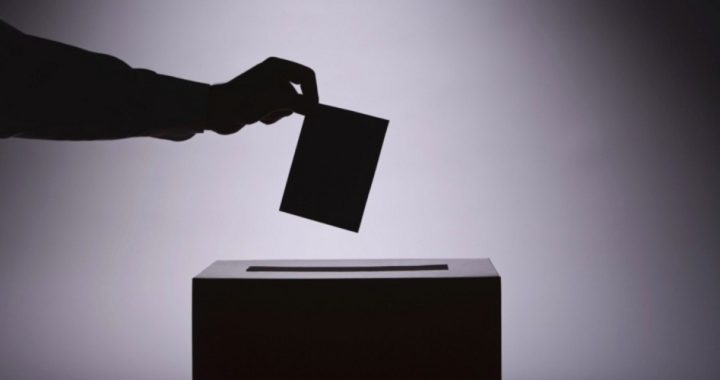
Republicans in Ohio are coping with ambiguous ballots in today’s Ohio Republican Primary. The ballot controversy became publicly known when early voters and absentee voters noted the ballots were divided into two sections. One section is for Delegates-At-Large and Alternates-At-Large to the Republican National Convention. The second section is for District Delegates and District Alternates to the same convention. The problem is that this primary is a winner-take-all primary. Voters, rightfully confused, have asked, “How can the ballots have multiple sections when only one candidate will be the sole winner?”
The Columbus Dispatch reported on March 8 that some voters were so confused they left early-voting polls without voting. The article went on to say the election officials at those locations noted the names of those voters and they will be welcomed back to vote once they get the confusion cleared up.
Voters should be asking other questions too, such as, “How did the Republican Party leadership and state election officials, knowing the presidential primary was coming, not take the right steps to prevent this from happening?”
Ohio Secretary of State Jon Husted responded to the ballot confusion problem in a press release on March 8, explaining how the ballot format was required by state law but the awarding of delegates was decided on the authority of the Republican Party. Husted added:
In late 2015, The Republican Party decided to change how it awards delegates in Ohio to a winner takes all process. The Republican Party chairman has clarified that the rules for awarding delegates will be based on the winner of the at-large delegate contest. Both contests will be counted. But the awarding of delegates is based solely on the first question. Essentially we are required by law to have both contests, but the awarding of delegates under Republican Party rules is based in the first question.
Husted’s explanation answers the question of which part of the ballot will be used to award delegates to the Republican National Convention. If you are still confused by the ballot and asking yourself why the ballot has a part saying you’re voting for “District Delegates and District Alternates to the National Convention,” even though the votes cast on this part of the ballot won’t elect any delegates to the Republican National Convention, don’t worry, you’re not alone.
How Open Is the Process?
When The New American looked into the counting of absentee and provisional ballots in Ohio in the 2012 presidential election, we were unable to learn any locations, dates, or times when those ballots would be counted, despite repeated requests.
Subsequently, The New American interviewed Jan Loar of Ohio Counts at the 2013 True The Vote National Summit in Houston, Texas. Loar explained the difficulties she encountered while attempting to place official Election Observers at the polls. She encountered resistance from local leaders of both major political parties.
Who’s Really in Charge of America’s Primary Elections?
Husted’s statement indicates the complicated mess that governs political primary elections. It is a morass of state laws, federal laws (which are unconstitutional), state party rules and regulations, and national party rules and regulations. That was a major obstacle faced by Mississippi State Senator Chris McDaniel when he wanted to challenge the results of the 2014 Mississippi Senate Primary Runoff Election between him and incumbent Thad Cochran. This problem is not new. It has been going on for quite some time. It is very similar to what happened in 1948 when Texas Governor Coke Stevenson wanted to challenge the results of the 1948 Senate primary runoff between himself and Congressman (later President) Lyndon B. Johnson, and found split lines of authority.
Should a political party be allowed to make a change in the formula for allocating the delegates in late 2015 for a March 15 primary, as Ohio Secretary of State Husted said in his statement? This is an open invitation to manipulation of delegate counts based on how well favored candidates are doing.
Are political parties private organizations with limited public scrutiny, or are they public organizations subject to mandatory scrutiny by the public? At this point they seem to have the best of both worlds. They are private associations, but they have a virtual monopoly on access to being on the ballot in public elections that is enforceable under state laws. In the case of presidential primaries and presidential caucus votes, they determine who the delegates will be to the nominating conventions. They are, in essence, much like the Electoral College as defined in the U.S. Constitution for electing the president. The U.S. Constitution forbids the Electoral College from meeting in a convention by stating, “The Electors shall meet in their respective States.” While the political parties do not elect a president, they are in a position to limit the choices the voters will have.
Another Florida in the Making?
Ohio’s 66 delegates to the Republican National Convention will be decided in this winner-take-all primary, and pollsters are predicting a very close contest. Will we see a repeat of Florida in 2000 where the results were in doubt? If the polls are accurate, that is a good possibility.
A CBS News poll published Sunday March 13 shows Donald Trump and Governor John Kasich tied at 33 percent each in Ohio, with Senators Ted Cruz and Marco Rubio trailing with 27 percent and five percent respectively.
The Quinnipiac University poll released March 14 shows similar results to the CBSNEWS poll. It shows Trump and Kasich tied at 38 percent each with Cruz at 16 percent and Rubio at three percent.
On the other hand, a WSJ/NBC News/Marist poll published in the Wall Street Journal on March 14 found that the race is less tight. According to this poll, Kasich is leading with 39 percent to Trump’s 33 percent. Cruz and Rubio trail far behind with 19 percent and six percent respectively.
Considering what is at stake, the nomination of a candidate for president, one would expect more openness in the voting process and less ambiguity regarding the rules, regulations, and ballot design. Will the results of this primary election show which of the above-mentioned polls was most accurate? Or will the problems in the election process result in enough doubt in the election totals that the polls will be used to validate the election? The former is the only acceptable answer in American elections.



